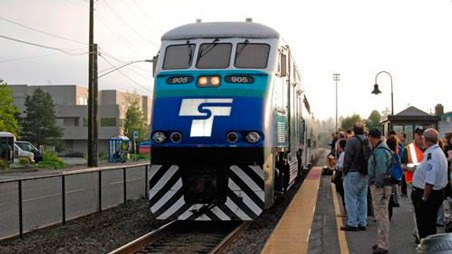The Sound Transit Board voted on Thursday to work with the state Legislature to secure local funding authority for a Sound Transit 3 ballot measure that will provide the opportunity for voters to expand mass transit for the region.
High-capacity transit investments are the best way – and in many cases the only way – to significantly expand transportation capacity in the state’s most congested corridors as the region’s population grows a projected 30 percent by 2040, according to a Sound Transit media release.
“For the Sound Transit Board to be able to put a measure before voters in 2016, the Legislature must first grant local authority to the agency,” said Sound Transit Board Chair and King County Executive Dow Constantine. “Once the state provides flexible funding tools, the Board can move to decide on a package of specific high-capacity projects, and the means by which voters can choose to fund them.”
In adopting its state legislative agenda for 2015, the Board voiced support for a bill with a range of flexible options to fund a ballot measure that can be considered by local voters. The Board discussed amounts that represent the maximum new revenue authority that could be proposed to voters, with the flexibility for the Board to propose lower amounts:
• Property tax of up to 25 cents for each $1,000 of assessed valuation ($75 annually for a $300,000 house). A property tax was identified as a way to establish a more progressive revenue source for regional transit investments that reduces reliance on the sales tax.
• Sales tax of up to an additional 0.5 percent ($.50 on a $100 purchase)
• Motor vehicle excise tax (MVET) reauthorization of up to 0.8 percent of vehicle value ($80 annually on a $10,000 vehicle). The 0.8 percent MVET was part of Sound Transit’s original enabling legislation but was rescinded in 2003. Through 2028 Sound Transit is continuing to collect 0.3 percent of the original MVET.
To enable the possibility of a Sound Transit 3 ballot measure as soon as November 2016, the agency needs additional revenue authority from the Legislature. No decisions have been made about the scale of the measure. In discussing the request to the Legislature, Board members emphasized the importance of maintaining enough revenue capacity for the projects and services that transit customers and stakeholders say they want, and flexibility to choose from multiple revenue sources.
Cumulatively, the revenue authority requested could generate a maximum of approximately $15 billion in new revenues over a 15-year period. That would more than cover the approximately $9 billion in new revenues needed to support a 15-year package roughly comparable to the 2008 Sound Transit 2 measure, and would provide flexibility to discuss additional projects and services. The Board would not necessarily seek to exercise the full authority for all of the sources. In addition to new revenues approved by local voters, a Sound Transit 3 measure would also include funding from other sources including but not limited to bonds, grants and existing taxes.
Next year, the Sound Transit Board is poised to begin the major public involvement effort to shape the Sound Transit 3 measure.
Talk to us
Please share your story tips by emailing editor@kentreporter.com.
To share your opinion for publication, submit a letter through our website https://www.kentreporter.com/submit-letter/. Include your name, address and daytime phone number. (We’ll only publish your name and hometown.) Please keep letters to 300 words or less.

